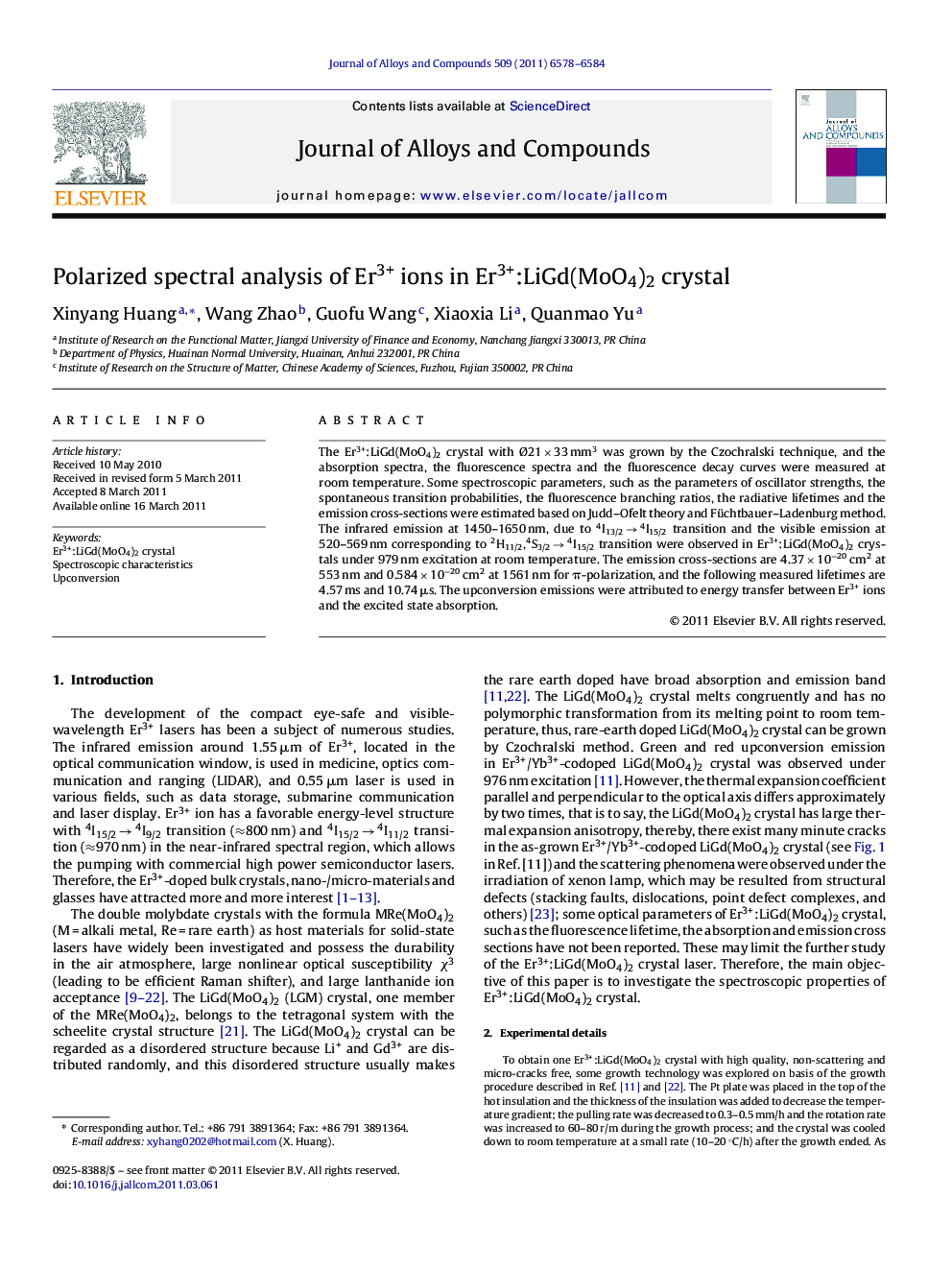| Article ID | Journal | Published Year | Pages | File Type |
|---|---|---|---|---|
| 1617814 | Journal of Alloys and Compounds | 2011 | 7 Pages |
The Er3+:LiGd(MoO4)2 crystal with Ø21 × 33 mm3 was grown by the Czochralski technique, and the absorption spectra, the fluorescence spectra and the fluorescence decay curves were measured at room temperature. Some spectroscopic parameters, such as the parameters of oscillator strengths, the spontaneous transition probabilities, the fluorescence branching ratios, the radiative lifetimes and the emission cross-sections were estimated based on Judd–Ofelt theory and Füchtbauer–Ladenburg method. The infrared emission at 1450–1650 nm, due to 4I13/2 → 4I15/2 transition and the visible emission at 520–569 nm corresponding to 2H11/2,4S3/2 → 4I15/2 transition were observed in Er3+:LiGd(MoO4)2 crystals under 979 nm excitation at room temperature. The emission cross-sections are 4.37 × 10−20 cm2 at 553 nm and 0.584 × 10−20 cm2 at 1561 nm for π-polarization, and the following measured lifetimes are 4.57 ms and 10.74 μs. The upconversion emissions were attributed to energy transfer between Er3+ ions and the excited state absorption.
► The Er3+:LiGd(MoO4)2 crystal with Ø21 × 33 mm3 was grown by the Czochralski technique. ► The spectroscopic characteristics and energy transfer process of Er3+:LiGd(MoO4)2 crystal were studied. ► This crystal exhibits a large emission cross-section and relatively long lifetime at 553 and 1561 nm. ► The investigated results reveal that the Er3+:LiGd(MoO4)2 crystal may be regarded as a potential laser material.
